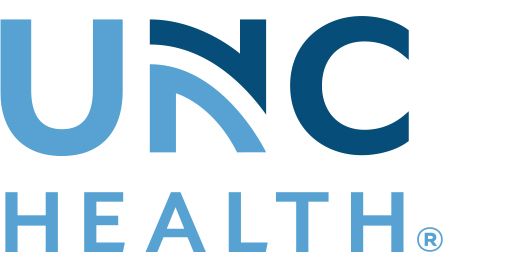
Pharmacy Practice in Focus: Oncology
- July 2025
- Volume 7
- Issue 5
Insights From ASCO 2025 Guide Pharmacy Practice in Solid Tumors and Hematologic Cancers

Key Takeaways
- The SERENA-6 trial used ctDNA to guide early intervention with camizestrant, improving progression-free survival in hormone receptor-positive breast cancer.
- Vepdegestrant, a PROTAC therapy, showed clinical benefit in ER-positive breast cancer, highlighting the potential of PROTACs in targeting oncogenic proteins.
The data highlight novel therapies and biomarkers shaping personalized cancer care.
The 2025 American Society of Clinical Oncology (ASCO) Annual Meeting in Chicago, Illinois, showcased significant advances across a range of malignancies, with novel agents, biomarker-driven strategies, and long-term outcomes data offering new insights into cancer treatment with implications for pharmacy practice.
In breast cancer, the SERENA-6 trial (NCT04964934) highlighted the use of circulating tumor DNA (ctDNA) to guide early intervention with camizestrant (AZD9833; AstraZeneca), whereas the first phase 3 results for the proteolysis-targeting chimeras (PROTACs) therapy vepdegestrant (ARV-471; Arvinas, Pfizer) demonstrated clinical benefit in estrogen receptor (ER)–positive disease. For gastrointestinal cancers, NAPOLI 3 trial (NCT04083235) data reinforced the role of liposomal irinotecan 50 mg/m2, oxaliplatin 60 mg/m2, leucovorin 400 mg/m2, and fluorouracil 2400 mg/m2 (NALIRIFOX) in pancreatic cancer and emphasized the value of dose optimization.
Hematologic malignancy presentations brought long-term evidence of benefit with Bruton tyrosine kinase (BTK) inhibitors and BCL2 combinations in chronic lymphocytic leukemia (CLL)/small lymphocytic lymphoma (SLL) and promising early-phase results for T-cell engagers (TCEs) in myeloma and lymphoma. In lung cancer, the DeLLphi-304 study (NCT05740566) findings established tarlatamab (Imdelltra; Amgen) as a new standard for relapsed small cell lung cancer (SCLC), whereas emerging HER2-targeted oral therapies and proactive toxicity management strategies signaled a shift toward more personalized and tolerable care. These findings from the 2025 ASCO Annual Meeting reflect the ongoing evolution of oncology therapeutics and underscore the increasingly critical role of pharmacists in interpreting, operationalizing, and optimizing novel regimens in clinical practice.
Breast Cancer
Camizestrant With CDK4/6 Inhibitor Improves PFS in Patients With Hormone Receptor–Positive/HER2-Negative Advanced Breast Cancer
ctDNA has been used in various settings across solid tumors, such as identification of driver mutations in non–small cell lung cancer (NSCLC) and as a minimal residual disease (MRD) assay in colorectal cancer to monitor for disease recurrence and determine necessity of adjuvant chemotherapy. The SERENA-6 trial used ctDNA monitoring to identify the development of a resistant ESR1 mutation in patients with hormone receptor–positive breast cancer receiving first-line aromatase inhibitor (AI) plus a CDK4/6 inhibitor.1
In this trial, patients with ESR1 mutations were randomly assigned to receive continuous AI plus CDK4/6 inhibitor or switch AI for camizestrant, a next-generation selective ER degrader, and continue the same CDK4/6 inhibitor. A significant increase in median progression-free survival (mPFS; 16.0 vs 9.2 months; HR, 0.44; 95% CI, 0.31-0.60) was observed in patients who switched to camizestrant. The trial findings demonstrate a new approach of using ctDNA monitoring to guide therapy changes prior to radiographic progression, which may be used in other solid tumors in the future.1
Vepdegestrant Shows Superiority to Fulvestrant in ER-Positive/HER2-Negative Advanced Breast Cancer
PROTACs are a novel class of anticancer agents that work by inducing intracellular proteolysis and degradation of a specific protein. This unique mechanism allows PROTACs to target oncogenic proteins that enzymatic inhibitors—such as tyrosine kinase inhibitors—cannot inhibit.2
Vepdegestrant is an oral PROTAC that targets ER and is the first agent of its type to be evaluated in a phase 3 trial. Improvements in outcomes were seen in the ESR1-mutant disease population (mPFS, 5.0 vs 2.1 months; HR, 0.57; 95% CI, 0.42-0.77) but not in all patients (mPFS, 3.7 vs 3.6 months; HR, 0.83; 95% CI, 0.68-1.02). Fortunately, vepdegestrant was well tolerated, with only 23.4% of patients experiencing a grade 3 or higher treatment-related adverse effect (AE). These results highlight the potential for future PROTAC agents against novel targets across various types of cancer.2
Hematology
Five-Year Data Show Sustained Efficacy of Zanubrutinib in CLL With High
Response Rates
The 5-year follow-up data from the phase 3 SEQUOIA trial (NCT03336333) cohort C demonstrated the sustained efficacy of continuous zanubrutinib (Brukinsa; BeiGene) therapy for patients with treatment-naive (TN) CLL/SLL with deletion 17p (del[17p]), with an estimated 60-month PFS with zanubrutinib at 72.2% and safety consistent with prior follow-up.3-7 It is notable that this is the largest uniform cohort of patients with TN CLL/SLL with del(17p) receiving a continuous covalent BTK inhibitor. With ibrutinib (Imbruvica; Janssen Biotech) and acalabrutinib (Calquence; AstraZeneca), there are data in this patient population described in individual trials, albeit in smaller numbers, as well as pooled analysis from clinical trials to examine the benefit in patients with del(17p)/TP53 mutation (TP53m).
As there is continued focus on what the optimal first-line therapy is for this high-risk disease population, it is important to note the specific percentage cutoff for reporting del(17p) and TP53m when interpreting and applying these data. Additionally, it is valuable to note that the rate of del(17p) reported for TN CLL may be between 5% and 10%. This is particularly salient with TP53m, as there is continued focus on what the optimal first-line therapy is for this high-risk disease population. Additionally, it is valuable to note that the rate of del(17p) reported for TN CLL may be between 5% and 10%, and high-burden TP53m and their associations on overall survival (OS) and time from diagnosis to second-line therapy, which are important to consider when interpreting and applying these data.3-8
Fixed-Duration Ibrutinib Plus Venetoclax Shows Long-Term Efficacy in First-Line CLL/SLL Treatment
The final analysis with 7 years of follow-up from the phase 2 CAPTIVATE trial (NCT04269902) evaluated fixed-duration ibrutinib and venetoclax (Venclexta; AbbVie) (I + V) for patients with TN CLL/ SLL. The trial included patients with and without del(17p), featured an MRD-guided randomized discontinuation and a fixed-duration cohort, and demonstrated durable PFS and OS benefit.
The trial data showed that ibrutinib-based retreatment for patients requiring subsequent therapies was feasible. As more fixed-duration and MRD-guided treatment options emerge for patients with TN CLL/SLL, it will be important to evaluate these options compared with existing standards of care for patients with and without high-risk features and, in particular, note the association between undetectable MRD and PFS or time to next treatment. In the case of I + V from the CAPTIVATE study, for patients with and without del(17p), the 5.5-year PFS was 36% vs 70%, respectively. However, this should be viewed alongside the trial data that showed ibrutinib-based retreatment demonstrated promising responses and that among the 53 patients with available samples at disease progression, there were no resistance-associated mutations in BTK or PLCG2.9
Adding Elranatamab to Daratumumab, Lenalidomide Induces Durable Responses in Newly Diagnosed Multiple Myeloma
The initial results were reported at ASCO 2025 for the phase 3 MagnetisMM-6 trial (NCT05623020) part 1 dose level G, which evaluated elranatamab (Elrexfio; Pfizer) in combination with daratumumab (dara; Darzalex; Janssen Biotech) and lenalidomide (Revlimid; Bristol Myers Squibb) in patients with transplant ineligible (TIE) newly diagnosed multiple myeloma (NDMM), with the dosing schedule of elranatamab with step-up dosing (cycle 0 [C0] day 1 [D1]: 12 mg; C0 day 4: 32 mg; C0 day 8: 76 mg) followed by elranatamab 76 mg every 4 weeks on cycle 1 [C1] D1 plus subcutaneous dara 1800 mg (once weekly for C1 to cycle 2 for 8 doses, once every 2 weeks for cycle 3 to cycle 6 for 8 doses, once every 4 weeks for cycles 7 and above) and lenalidomide (25 mg by mouth daily on days 1-21) in a 28-day cycle. These results are early, with a median follow-up of 4.6 months, and demonstrate promising response rates (overall response rate [ORR], 91.9%; very good partial response rate, 81.1%) with an elranatamab dosing schedule of every 4 weeks.
It is important to highlight the incidence of grade 3/4 infection at 18.9%, with 1 case of grade 5 Candida pneumonia reported in the context of anti-infective prophylaxis and immunoglobulin (Ig) replacement (n = 34 of 37; 91.9%) given to patients. As T-cell engagers move into earlier lines of therapy in the management of MM, there is a continued importance of infection monitoring, prophylaxis, and treatment alongside preventive measures such as Ig replacement. Furthermore, given the high incidence and mortality burden from infections for patients with MM, there are continued efforts in harmonizing how infections are reported in clinical trials to provide clearer information on the risk of treatment-related infections for patients.10-12
Epcoritamab-bysp Yields Long-Term Disease Remission in Patients With Relapsed/Refractory Large B-Cell Lymphoma
This post hoc analysis of the 3-year results of the EPCORE NHL-1 study (NCT03625037) that evaluated epcoritamab (Epkinly; Genmab) in patients with relapsed/refractory B-cell lymphoma focused on patients who remained in complete response (CR) at 2 years after starting therapy. Of the 41% of patients (n = 65 of 157) who achieved a CR, 49% (n = 32) remained in CR at 2 years, representing 20% of patients (n = 32 of 157). Of these 32 patients in CR at 2 years, 31 patients remained in CR at 3 years.
Notably, infectious complications are uncommon for those still on treatment after 2 years. The data show 19% (n = 5 of 26) of patients still on treatment at 2 years having 1 or fewer serious infection and 2 patients having a fatal infection (eg, COVID-19, pneumonia) after 2 years. Additionally, it is important to note that this analysis presents data on a small group of patients who had discontinued therapy for reasons other than progressive disease.
These trial data highlight the long-term disease remission and OS for a portion of patients and better characterize this patient population while describing the infection risk of a continuous CD20 × CD3 T-cell engager (TCE) strategy. As CD20 × CD3 TCEs continue to move into earlier lines of therapy for B-cell lymphomas in various combinations, it is important to differentiate patients who are more likely to achieve a durable CR between these strategies. Further, the incidence, severity, and kinetics of cytokine release syndrome (CRS) and immune effector cell–associated neurotoxicity syndrome with CD20 × CD3 TCEs may vary depending on the B-cell lymphoma subtype and the combination partners used, which is a notable consideration for oncology pharmacists when operationalizing these therapies.13
Daratumumab Plus RVd Yields Sustained MRD Negativity Regardless of Cytogenetic Risk Status in NDMM
The cytogenetic subgroup analysis of the phase 3 CEPHEUS trial (NCT03652064) that evaluated dara with lenalidomide, bortezomib, and dexamethasone (dara-RVd) vs RVd alone in patients with TIE/transplant-deferred (TD) NDMM demonstrated that dara-RVd improved PFS and rates of MRD negativity in patients with standard cytogenetic risk (without del[17p], t[4;14], t[14;16]) and revised standard cytogenetic risk (without del[17p], t[4;14], t[14;16], and gain/amp[1q]). Although the addition of dara improved PFS for those with high-risk cytogenetic abnormalities (HRCAs), outcomes still trended lower for those with HRCAs in both treatment arms.
These updated data from the CEPHEUS trial continue to support the use of dara-RVd in patients with TIE/TD NDMM while highlighting the continued need for novel therapeutic approaches for patients with high-risk MM (HRMM) observed in the trial, such as those with 2 or more HRCAs and gain/amp(1q) plus 1 or more HRCAs. The updated International Myeloma Working Group consensus recommendations on the definition of HRMM were recently published with the proposed consensus genomic staging of HRMM, relying on the presence of at least 1 of the following: del(17p), with a cutoff of 20% or greater clonal fraction, and/or TP53 mutation; an Ig heavy chain translocation including t(4;14), t(14;16), or t(14;20) along with 1q+ and/or del(1p32); monoallelic del(1p32) along with 1q+ or biallelic del(1p32); or β2-microglobulin level of 5.5 mg/L or greater with normal creatinine level (< 1.2 mg/dL). The updated definition for HRMM is increasingly important as there is an increased focus on how to improve outcomes for patients with HRMM, functional HRMM, and true extramedullary disease.14,15
Lung Cancer
Tarlatamab Significantly Improves Survival in Patients With Small Cell Lung Cancer Post Progression
Tarlatamab has shown promising efficacy in relapsed SCLC based on the initial single-arm trial findings, leading to an FDA approval in 2024, but challenges with administration have limited its widespread adoption. The findings of the DeLLphi-304 study demonstrated improved OS of tarlatamab compared with single-agent chemotherapy (median OS [mOS], 13.6 vs 8.3 months; HR, 0.60; 95% CI, 0.47-0.77); this now presents a new standard of care for these patients. In addition to the efficacy, one key feature of this study was a protocol amendment that allowed patients to undergo 6 to 8 hours of outpatient monitoring during the first 2 doses. Notably, the group with 6 to 8 hours of outpatient monitoring had lower rates of CRS than the group with standard 48-hour monitoring (all grades, 37% vs 60%), presenting an easier administration method to allow more institutions to offer this treatment.16
Zongertinib Shows Strong Potential in HER2-Mutant NSCLC Treatment Landscape
Lung cancer research has been the pioneer of precision medicine in oncology, with 10 different biomarkers with approved targeted therapies. However, not all these agents are oral, with only intravenous trastuzumab-deruxtecan (Enhertu; Daiichi Sankyo, AstraZeneca) currently approved for HER2 activation mutations and overexpression. Development of prior HER2 oral therapies, such as poziotinib (NOV120101; Spectrum Pharmaceuticals), was limited by significant toxicities. Zongertinib has demonstrated both promising efficacy (ORR, 71%; mPFS, 12.4 months) with manageable toxicity (17% grade 3 or higher AEs) based on the findings of the Beamion LUNG-1 study (NCT04886804) and may serve as the first successful oral agent targeting HER2 mutations. Having a tolerable oral agent available presents an opportunity for a more convenient treatment for our patients.17
Proactive Dermatologic Care Reduces Symptom Severity and Boosts Quality of Life in NSCLC
Amivantamab (Rybrevant; Janssen Biotech) has demonstrated remarkable efficacy in EGFR-mutant NSCLC both in the frontline and subsequent-line settings. Unfortunately, with the dual EGFR blockade of amivantamab and lazertinib (Lazcluze; Janssen Pharmaceuticals) when given as a frontline regimen, toxicities are a major concern, with over 75% of patients in the MARIPOSA trial (NCT04487080) reporting grade 3 or higher AEs with this combination. The COCOON trial (NCT06120140) randomly assigned patients to receive an aggressive prophylactic regimen of oral doxycycline or minocycline, clindamycin lotion, chlorhexidine rinse, and ceramide-based moisturizer, which was able to reduce rates of dermatologic reactions 2-fold (76.5% vs 38.6%). Given the significant toxicity of amivantamab plus lazertinib, all patients who start this treatment should also receive the prophylactic COCOON regimen.18
Pancreatic Cancer
Insights on NALIRIFOX Use in Metastatic Pancreatic Ductal Adenocarcinoma From the NAPOLI 3 Trial
Pancreatic cancer is an aggressive solid tumor with a poor prognosis. Frontline standard-of-care treatment options include gemcitabine plus albumin-bound paclitaxel or folinic acid, fluorouracil, irinotecan hydrochloride (Camptosar; Pfizer), and oxaliplatin, both of which demonstrated improved OS against gemcitabine alone.19
Another regimen using liposomal irinotecan (NALIRIFOX) has also demonstrated promising efficacy in the NAPOLI 3 trial findings, which showed an improved OS of NALIRIFOX compared with gemcitabine plus albumin-bound paclitaxel (mOS, 11.1 vs 9.2 months; HR, 0.83; 95% CI, 0.70-0.99). Importantly, dose reductions were examined in 15 long-term survivors with NALIRIFOX. Investigators found that 67% and 80% of patients had a dose reduction in liposomal irinotecan and oxaliplatin, respectively. These data highlight the importance of toxicity management to ensure patients are able to stay on treatment longer.19
REFERENCES
1. McGovern G. ASCO 2025: camizestrant with CDK4/6 inhibitor improves PFS in patients with HR+/HER2- advanced breast cancer. Pharmacy Times. June 5, 2025. Accessed June 23, 2025. https://www.pharmacytimes.com/view/asco-2025-camizestrant-with-cdk4-6-inhibitor-improves-pfs-in-patients-with-hr-her2--advanced-breast-cancer
2. McGovern G. ASCO 2025: vepdegestrant shows superiority to fulvestrant in ER+/HER2- advanced breast cancer. Pharmacy Times. June 9, 2025. Accessed June 23, 2025. https://www.pharmacytimes.com/view/asco-2025-vepdegestrant-shows-superiority-to-fulvestrant-in-er-her2--advanced-breast-cancer
3. Gerlach A. Five-year data show sustained efficacy of zanubrutinib in CLL with high response rates. Pharmacy Times. June 13, 2025. Accessed June 23, 2025.
https://www.pharmacytimes.com/view/five-year-data-show-sustained-efficacy-of-zanubrutinib-in-cll-with-high-response-rates
4. Choi DS, Ren Y, Tyekucheva S, et al. Low variant allele frequency (VAF) TP53 mutation (mut) is not a poor prognostic marker in CLL patients treated with targeted therapy. Blood. 2024;144(suppl 1):587. doi:10.1182/blood-2024-208951
5. Sharman JP, Egyed M, Jurczak W, et al. Acalabrutinib with or without obinutuzumab versus chlorambucil and obinutuzumab for treatment-naive chronic lymphocytic leukaemia (ELEVATE TN): a randomised, controlled, phase 3 trial. Lancet. 2020;395(10232):1278-1291. doi:10.1016/S0140-6736(20)30262-2
6. Sharman JP, Egyed M, Jurczak W, et al. Acalabrutinib ± obinutuzumab versus obinutuzumab + chlorambucil in treatment-naïve chronic lymphocytic leukemia: five-year follow-up of ELEVATE-TN. J Clin Oncol. 2022;40(suppl 16):7539. doi:10.1200/JCO.2022.40.16_suppl.7539
7. Davids MS, Sharman JP, Ghia P, et al. Acalabrutinib-based regimens in frontline or relapsed/refractory higher-risk CLL: pooled analysis of 5 clinical trials. Blood Adv. 2024;8(13):3345-3359. doi:10.1182/bloodadvances.2023011307
8. Allan JN, Shanafelt T, Wiestner A, et al. Long-term efficacy of first-line ibrutinib treatment for chronic lymphocytic leukaemia in patients with TP53 aberrations: a pooled analysis from four clinical trials. Br J Haematol. 2022;196(4):947-953. doi:10.1111/bjh.17984
9. Gerlach A. Fixed-duration ibrutinib plus venetoclax shows long-term efficacy in first-line CLL/SLL treatment. Pharmacy Times. June 4, 2025. Accessed June 23, 2025. https://www.pharmacytimes.com/view/fixed-duration-ibrutinib-plus-venetoclax-shows-long-term-efficacy-in-first-line-cll-sll-treatment
10. Gerlach A. ASCO 2025: adding elranatamab to daratumumab, lenalidomide induces durable responses in newly diagnosed multiple myeloma. Pharmacy Times. May 29, 2025. Accessed June 23, 2025. https://www.pharmacytimes.com/view/adding-elranatamab-to-daratumumab-and-lenalidomide-induces-durable-responses-in-newly-diagnosed-multiple-myeloma
11. Ludwig H, Munshi NC, Terpos E, et al. Proposal for harmonizing the reporting of infections during treatment with bispecific antibodies in multiple myeloma. Blood Adv. 2024;8(18):4979-4982. doi:10.1182/bloodadvances.2024013461
12. Richter J, Dhodapkar MV, Li M, et al. Balancing the scales: optimizing reporting of infection rates in clinical trials of bispecific antibodies in multiple myeloma. Am J Hematol. 2025;100(4):548-551. doi:10.1002/ajh.27618
13. Gerlach A. Epcoritamab-bysp yields long-term disease remission in patients with relapsed, refractory large B-cell lymphoma. Pharmacy Times. May 29, 2025. Accessed June 23, 2025. https://www.pharmacytimes.com/view/epcoritamab-bysp-yields-long-term-disease-remission-in-patients-with-relapsed-refractory-large-b-cell-lymphoma
14. Avet-Loiseau H, Davies FE, Samur MK, et al. International Myeloma Society/International Myeloma Working Group consensus recommendations on the definition of high-risk multiple myeloma. J Clin Oncol. Published online June 9, 2025. doi:10.1200/JCO-24-01893
15. Gerlach A. Daratumumab plus VRd yields sustained MRD-negativity regardless of cytogenetic risk status in NDMM. Pharmacy Times. May 29, 2025. Accessed June 23, 2025. https://www.pharmacytimes.com/view/daratumumab-plus-vrd-yields-sustained-mrd-negativity-regardless-of-cytogenetic-risk-status-in-ndmm
16. Halpern L. Tarlatamab significantly improves survival in patients with small cell lung cancer post-progression. Pharmacy Times. June 6, 2025. Accessed June 23, 2025. https://www.pharmacytimes.com/view/tarlatamab-significantly-improves-survival-in-patients-with-small-cell-lung-cancer-post-progression
17. Sabari J, Ferruggia K. ASCO 2025: zongertinib shows strong potential in HER2-mutant NSCLC treatment landscape. Pharmacy Times. June 3, 2025. Updated June 11, 2025. Accessed June 23, 2025. https://www.pharmacytimes.com/view/asco-2025-zongertinib-shows-strong-potential-in-her2-mutant-nsclc-treatment-landscape
18. Gerlach A. Proactive dermatologic care reduces symptom severity and boosts quality of life in NSCLC. Pharmacy Times. May 30, 2025. Accessed June 23, 2025. https://www.pharmacytimes.com/view/proactive-dermatologic-care-reduces-symptom-severity-and-boosts-quality-of-life-in-nsclc
19. Chung V, Hippensteele A. ASCO 2025: insights on NALIRIFOX use in metastatic pancreatic ductal adenocarcinoma from the NAPOLI-3 trial. Pharmacy Times. June 5, 2025. Accessed June 23, 2025. https://www.pharmacytimes.com/view/asco-2025-insights-on-nalirifox-use-in-metastatic-pancreatic-ductal-adenocarcinoma-from-the-napoli-3-trial
Articles in this issue
Newsletter
Stay informed on drug updates, treatment guidelines, and pharmacy practice trends—subscribe to Pharmacy Times for weekly clinical insights.




















































































































































































































